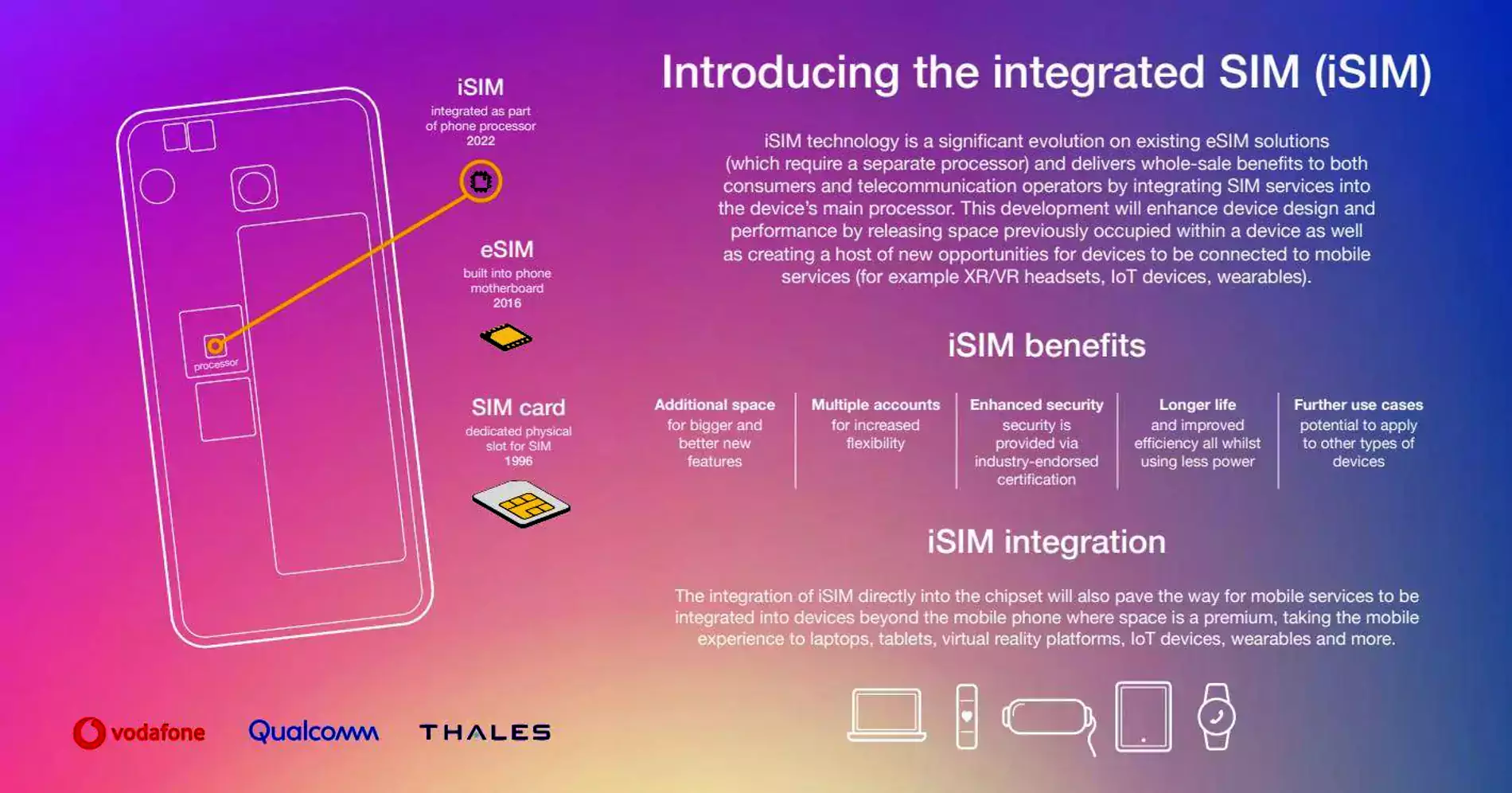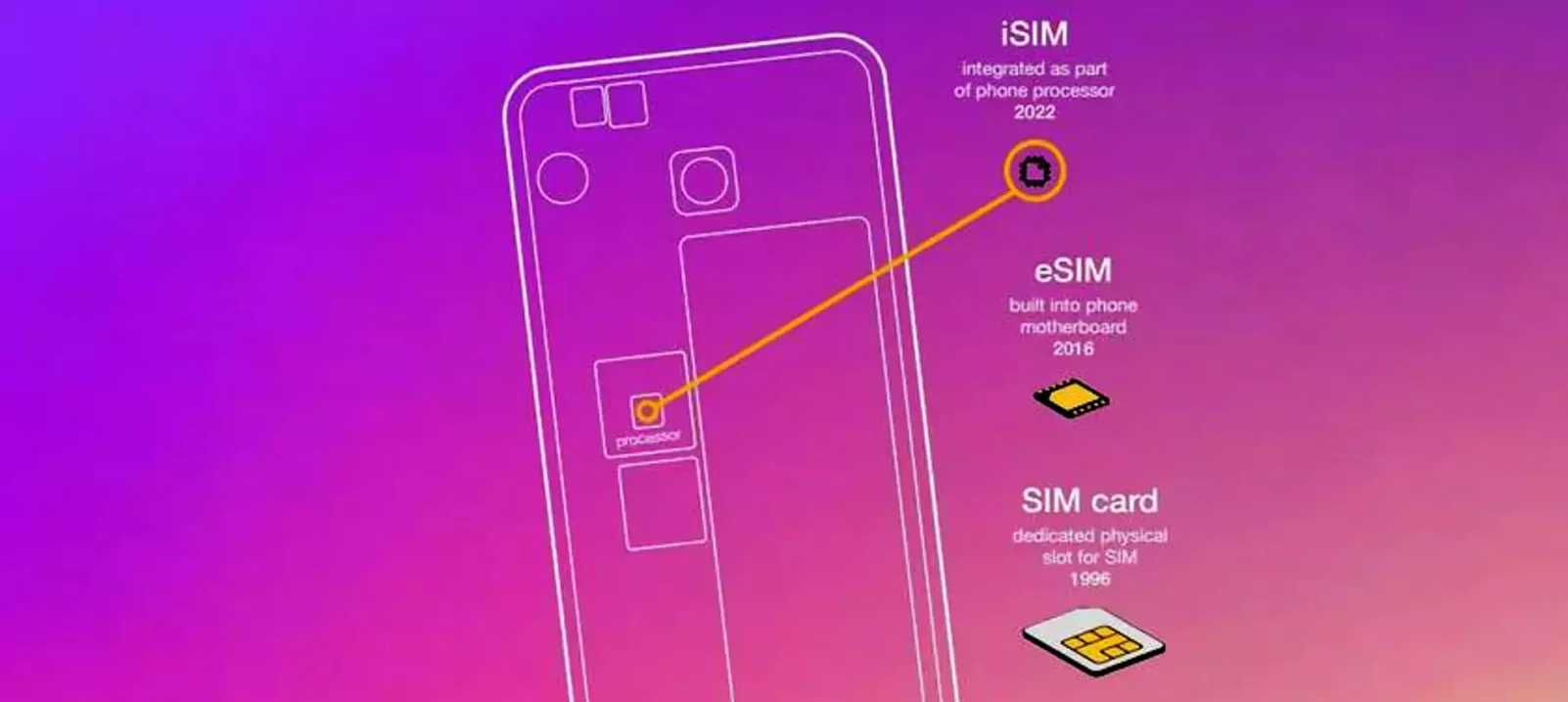Vodafone, Qualcomm and Thales have joined forces to demonstrate a working smartphone featuring iSIM (based on the ieUICC GSMA specification – a new technology enabling the functionality of a SIM card to be integrated into a device’s main processor.
This milestone paves the way for commercialisation of the technology, which could be rolled out in a host of new devices that will use iSIM to connect to mobile services.
The iSIM, which complies with GSMA specifications, embeds the SIM functionality into the device’s main processor, allowing for greater system integration, higher performance, and increased memory capacity.
This technology is the latest evolution of SIM technology in which ‘eSIMs’ are embedded into devices. However, eSIM requires a separate chip: with iSIM this is no longer necessary and removes the need for dedicated space assigned to SIM services.
SIM technology is a significant evolution on existing eSIM solutions and delivers wholesale benefits to both consumers and telecommunications operators, further paving the way for mobile services to be integrated into devices beyond the mobile phone, taking the mobile experience to laptops, tablets virtual reality platforms, IoT devices, wearables, and more.

The iSIM is integrated in the application processor of the device bringing multiple benefits:
- Simplifies and enhances device design and performance by releasing space previously occupied within a device
- Consolidates the SIM functionality into the device’s main chipset alongside other critical capabilities such as GPU, CPU, and modem
- Enables remote SIM provisioning by the operator leveraging the existing eSIM infrastructure
- Opens mobile service connection capabilities to a host of devices that previously could not have SIM capabilities built-in
Alex Froment-Curtil, chief commercial officer, Vodafone, said:
“Our aim is to create a world where every device connects seamlessly and simply to each other, and the customer has complete control. The iSIM, combined with our remote management platform, is a major step in this direction, allowing devices to be connected without a physical SIM or dedicated chip, making connectivity to many objects – the promise of the connected IoT world – a reality.
It will enable our customers to enjoy the ease of multiple accounts on one device, while from an operator’s point of view, help eliminate the need for separate SIM cards and the additional plastic this consumes. We will continue working closely with Samsung, Qualcomm Technologies, and Thales to evolve further applications for this technology and accelerate its commercialisation.”
A proof of concept (POC) demonstration took place in Europe, as one of the highest global smartphone penetration regions. The POC illustrates the technology’s commercial readiness and efficiency working on existing infrastructure, leveraging Vodafone’s advanced network capabilities.
In the demonstration, the fully operational proof of concept device used on Vodafone’s network was based on the Samsung Galaxy Z Flip3 5G powered by a Snapdragon® 888 5G Mobile Platform, which features a built-in Qualcomm® Secure Processing Unit running the Thales iSIM operating system for the purpose of this demonstration.
This proof of concept took place in Samsung’s R&D labs using Vodafone’s advanced remote management platform.
Enrico Salvatori, senior vice president and president, Europe/MEA, Qualcomm Europe, Inc., said:
“iSIM solutions offer great opportunities to MNOs, free-up valuable space in devices for OEMs, and provide flexibility for device users to benefit from the full potential of 5G networks and experiences across a wide range of device categories.
Some of the areas that will benefit most from iSIM technology include smartphones, mobile PCs, VR/XR headsets, and industrial IoT. By engineering the iSIM technology into the SoC, we are able to create additional support for OEMs in our Snapdragon platform.”



